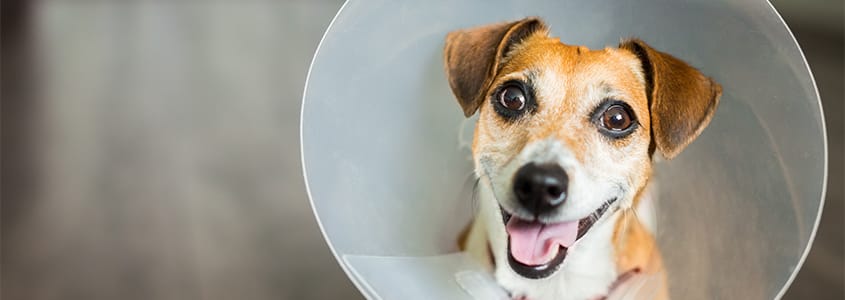
Whether through trauma or accidents while playing or eating, your pet may experience an emergency situation such as choking. Our Memphis emergency vets share the signs of choking in pets, the steps you should take and how to perform CPR or the Heimlich maneuver on your cat or dog.
Signs and Symptoms Related to Choking in Dogs or Cats
Here are the common signs of choking in pets:
- Distress
- Pawing at the mouth
- Rubbing their face against the ground
- Gagging or retching
- Salivation
- Coughing
- Blue mucous membranes (cyanosis)
If your dog or cat is showing any of the signs listed above, please follow the steps below and contact our emergency animal clinic immediately to have your pet seen.
How to Help a Choking Dog or Cat
If your pet is experiencing difficulties breathing then they may be choking. Here is what to do if your cat or dog is choking and needs help:
Clear Their Airway (If Possible)
The first step should always be to restrain or contain your pet. If you do not do this, they can struggle and cause harm to both themselves and those around them. If they are choking because a cord, string or other item is wrapped around the neck, carefully use a pair of scissors to cut it off.
If the cat or dog is choking on something lodged in their mouth or throat, open the mouth to see if you can locate the object. If you can see it, try to swipe it away with your finger.
If you cannot see it, don't try to poke your finger down your pet's throat in an effort to find it, as this can cause injury. If you can't dislodge the object by swiping it away, do not try to poke it or push on it, as this could force it further down the throat.
Performing the Heimlich Maneuver on Pets
The Heimlich maneuver would be the next step if you are unable to clear your pet's airway:
Heimlich Maneuver for Cats:
- Sweep your cat's mouth for the object, if you cannot locate and remove then perform the Heimlich Maneuver
- Hold your cat with their back against your chest and feet hanging down
- Use your hands to gently but firmly push on her belly in quick, upward thrusts, about five times
- Check if the object has been dislodged
- If not, hold the cat by the back hips with their head down and sweep their mouth
- Firmly tap their back and sweep their mouth again
Heimlich Maneuver For Small Dogs
- Carefully hold your dog on your lap and turn them onto their back
- Using the palm of your hand apply pressure right beneath the rib cage
- Push firmly inwards and upwards five times in a thrusting motion
- Roll your dog back onto their side and check their mouth for the food or object that was causing the issue
Heimlich Maneuver For Medium and Large Dogs
If your dog is standing- Put your arms around them and join your hands in front of their abdomen
- Make a fist with your hands and firmly and swiftly push up and forward five times in a thrusting motion
- Check that the object has been fully dislodged and removed from the mouth
- Place one hand on the dog's back and use the other hand to push or squeeze their abdomen upwards and forward toward the spine
- Do a sweep of their mouth to ensure that the object is clear of their airway
How to Perform CPR on a Choking Dog or Cat
If the Heimlich maneuver is unsuccessful and your dog or cat no longer has a pulse, begin CPR at approximately 120 chest compressions per minute and continue these until at the veterinary practice.
What to do Once Your Pet is No Longer Choking
Whether or not the steps above have been successful, you will need to contact your vet and bring your pet in for an examination. The vet will be able to ensure that the choking didn't cause any harm to your pet's body that you can't see.
Preventing Choking in Cats and Dogs
To minimize the chances of your pet choking in the future, make sure to keep an eye on anything that could be a potential choking hazard.
Generally, dog and cat food is formulated with the animal's size in mind, but it's always a good idea to monitor them when eating.
Monitor your dog or cat during play and make sure any toys do not include pieces that could break off and become potential choking hazards.
Note: The advice provided in this post is intended for informational purposes and does not constitute medical advice regarding pets. For an accurate diagnosis of your pet's condition, please make an appointment with your vet.
